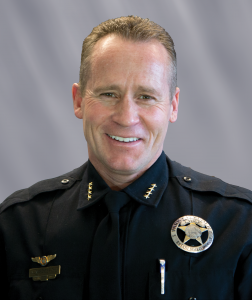
Park City Police Department, Utah
In the over 100 years that have lapsed since the entrance of women into the policing profession, much has changed. From skirts, heels, and administrative responsibilities to tactical wear, enforcement roles, and investigative responsibilities, the women who have entered policing have transformed the profession and paved the way for many others.
However, despite the progress made to date and the efforts of countless leaders in the field, the women who join the ranks of policing today are choosing a career path that has historically been—and still is to this day—dominated by men. I have heard from some of my female police counterparts that they often feel isolated and separated and face criticism and skepticism as they work to establish themselves and rise within the ranks. For many years, the differences in experiences between the genders were rarely discussed, particularly by those women in the field who often made great sacrifices over the course of their own careers as they strived to be viewed and treated the same as their male colleagues.
Yet, the reality is that these differences in both expectations and experiences are critical to discuss, for they impact not only a particular woman in her singular role, but the entire profession and our ability to encourage women to pursue and accept positions in the top tiers of police leadership. A vast array of people seated at the proverbial police chief table, representing many different groups, provides a diverse perspective that is critical to the growth of the police profession. This is particularly true in a time when policing has come under so much scrutiny, and shortcomings in police leadership have often been called out as critical contributing factors in many incidents throughout the world.
The participation of diverse individuals is necessary to continue moving both the organization and the profession forward.
As the IACP continues in its commitment to shape the future of the policing profession, we will continue to prioritize the inclusivity of underrepresented viewpoints and experiences and work diligently to bring new and diverse ideas and voices to the profession.
That is why, in 2018, the leadership of the IACP made it a top priority to take an inward look at the organization to evaluate if the association was truly taking advantage of the opportunity to attract members that reflect that diversity and the many countries and cultures we represent.
First Steps
In light of our focus on diversity within the IACP’s leadership and membership, the IACP Board of Directors established the IACP Diversity Task Force to assess the association’s diversity efforts, map future strategies, and ensure that diversity and inclusion are hallmarks of the IACP. The work of this task force resulted in a variety of efforts, including updating the IACP’s Constitution, which governs the work of the association, to emphasize that diversity, equity, and inclusion (DEI) are foundational and core values of the IACP.
Further, the task force’s direction required a greater emphasis on our efforts to recruit diverse membership into the association, an assessment of all of the IACP’s external communications and products and the work of our committees, and the identification of leading practices to enhance DEI efforts.
In 2020, the IACP established the Women in Policing Task Force. The task force identified barriers faced by women serving in or seeking to join the profession, as well as leading practices strategies for enhancing gender diversity, both in policing as a whole and within the IACP leadership.
Diversity and Equity Task Force
In 2022, the elected leadership of the IACP committed to keeping diversity and inclusion as foundational core values within the association by challenging ourselves to take the work done to the next step to increase wider and more diverse participation in leadership roles within the association.
The new Diversity and Equity Task Force was appointed to evaluate the organization’s current paths to leadership positions. The task force has been given authority by all elected leaders, present and future, to take a critical look at the procedures, practices, rules, and policies that currently exist.
We know that this is a task that cannot be resolved in a short period of time, but we are committed to this work and will continue to move forward to become more diverse in our leadership.
In the year since the creation of the task force, we have been able to reach out to members to determine the impediments to leadership through listening sessions at the 2023 IACP Annual Conference in San Diego, California. We thank our members who gave us honest feedback to our inquiry. We learned more about our shortfalls, and we have already begun to make adjustments based on the suggestions that were made. As a result, you will see a more diverse board of directors, including more female members. The most repeated statement made to the task force was that appointed leadership positions must look more like our membership, and we have committed to achieve that representation.
There is more work to be done by the Diversity and Equity Task Force—particularly in the recruitment of future appointed and elected leadership, including board members and committee representatives. The participation of diverse individuals is necessary to continue moving both the organization and the profession forward. Further, authentic inclusion will inspire more women to undertake the challenge of police leadership as well as influence a desire among women—and police professionals across all demographics—to participate in organizations such as the IACP.
We hope that, if contacted, you will assist in the work that this group is doing by giving your opinion and thoughts.d
Please cite as
Wade Carpenter, “Inclusion and Representation in the IACP,” President’s Message, Police Chief 91, no. 3 (March 2024): 6–9.


